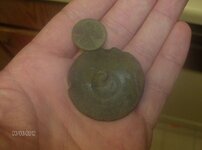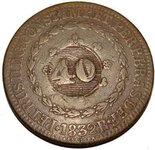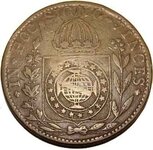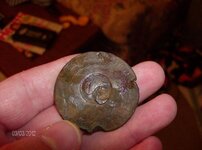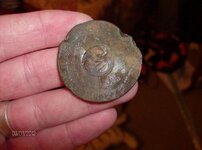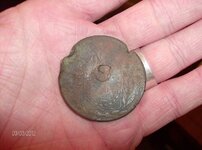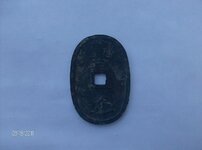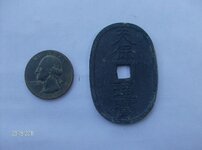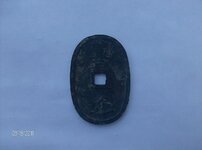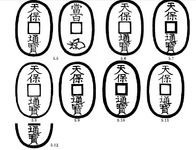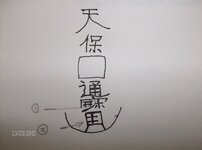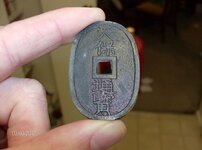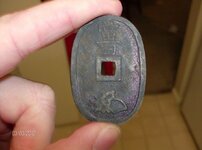shack24
Full Member
- May 26, 2011
- 101
- 53
- Detector(s) used
- Garrett Gta 500; Garrett Ace 350; Whites M6
- Primary Interest:
- All Treasure Hunting
My oldest coin - I Didn't even know I had it
Last summer I had found some great stuff around an old home in Southeast Missouri that had burned down. I found this large coin shaped object but I couldn't make out much on it so I put it in my finds box and kind of forgot about it. Yesterday I remembered it and decided to really try to identify what it was. I found it very close to the surface and it looks like a lawnmower had gotten a hold of it at some time.
After some work I could see a date: 1832. Then the name: Petrus II. I went with this and found out that it is actually a 40 Reis coin from Brazil.
My oldest coin up to that point had been an 1860's shield nickel. Oh and a 100 Mon Japanese coin from somewhere between 1835 and 1870 that I found in the same yard as the 40 Reis.
What I really like about this coin is it made me look up and learn about Petrus II (Pedro II) He was the last Emperor of the Brazilian Empire and came to power at the age of 5 when his father hightailed it out of Brazil. He is credited with making Brazil a world power. He came to power in 1831, the year before the coin was minted and his rule lasted until 1889. Another interesting fact about the coin is that it was originally an 80 Reis piece but was re-struck to be 40. You can see it in the last couple pictures of a coin in good shape. Wish mine had been. Still, a great find I think. I am a high school Spanish teacher with a history minor so this got me really excited. The 1830's were some very interesting years in South an Central America. I wish I could see what this coin has seen during its 180 years.
HH!
Jared
Last summer I had found some great stuff around an old home in Southeast Missouri that had burned down. I found this large coin shaped object but I couldn't make out much on it so I put it in my finds box and kind of forgot about it. Yesterday I remembered it and decided to really try to identify what it was. I found it very close to the surface and it looks like a lawnmower had gotten a hold of it at some time.
After some work I could see a date: 1832. Then the name: Petrus II. I went with this and found out that it is actually a 40 Reis coin from Brazil.
My oldest coin up to that point had been an 1860's shield nickel. Oh and a 100 Mon Japanese coin from somewhere between 1835 and 1870 that I found in the same yard as the 40 Reis.
What I really like about this coin is it made me look up and learn about Petrus II (Pedro II) He was the last Emperor of the Brazilian Empire and came to power at the age of 5 when his father hightailed it out of Brazil. He is credited with making Brazil a world power. He came to power in 1831, the year before the coin was minted and his rule lasted until 1889. Another interesting fact about the coin is that it was originally an 80 Reis piece but was re-struck to be 40. You can see it in the last couple pictures of a coin in good shape. Wish mine had been. Still, a great find I think. I am a high school Spanish teacher with a history minor so this got me really excited. The 1830's were some very interesting years in South an Central America. I wish I could see what this coin has seen during its 180 years.
HH!
Jared
Attachments
Upvote
0


